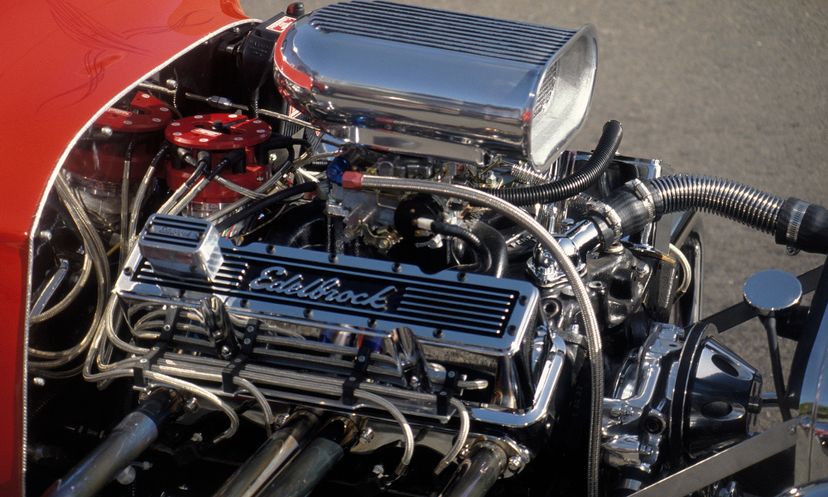
About This Quiz
Think you know what makes good performance? Take this HowStuffWorks quiz to test your knowledge!
You push on your car's gas pedal and the engine goes vroom. For some people, that's all they need. But if you love cars and love the performance features of them, you probably know a bit about what makes for good performance... and what doesn't.
Some people don't consider performance a factor when purchasing a new car - at least not past simple specifications such as acceleration, ride and speed. After all, do you know how many seconds it takes your car to go from zero to sixty? Probably not. But, if you've actually timed that, then you likely know about performance factors such as intake, timing, compression, and exhaust. From the engine to the tailpipe, it's all about how the vehicle performs.
So, if you know that proper tire inflation increases fuel efficiency by reducing friction, that engines need air and fuel to go vroom, and that a buildup of crud (yup, that's a technical automotive term) on the engine can kill your car's performance, you just might be able to ace this quiz.
We challenge you since you think you are an engine performance whiz, to take this HowStuffWorks quiz!
Headers improve engine performance by making the exhaust stroke less power intensive.
Exhaust headers eliminate back pressure by giving each cylinder its own exhaust pipe.
Since well-inflated tires have less contact with the road, they encounter less friction and the engine doesn't have to work as hard to move the car.
Advertisement
Engines tend to waste power during the exhaust stroke when they come up against the resistance of back pressure.
When nitrous oxide is heated, it splits into nitrogen and oxygen, making more oxygen available to the engine during combustion.
When it vaporizes, nitrous oxide provides a cooling effect on the intake air, which increases the air's density and provides even more oxygen inside the cylinder.
Advertisement
Due to the bulk of nitrous oxide, it takes up a significant amount of space even when compressed into a liquid. Drivers tend to carry only a small amount and use it selectively by pushing a button.
Using the exhaust flow from the engine, turbines in a turbocharger can spin the air about 30 times faster than a regular car engine can -- at speeds of up to 150,000 rpm.
Dual overhead camshafts (DOHC) produce more power and can run at higher speeds since they allow an engine to have at least four valves per cylinder.
Advertisement
Although thousands of minor things can create engine problems, the big three include a bad fuel mix, a lack of compression and a lack of spark.
Not all performance improvements boost horsepower or increase speed. Fuel economy is one such sign of a better-performing engine.
To become more powerful, the engine needs to be modified to accept more air and more fuel.
Advertisement
A supercharger improves a car's power output by about 50 percent.
A supercharger spins at at least 50,000 rpm.
Installing a supercharger is a fairly straightforward bolt-on procedure requiring basic tools.
Advertisement
An upgraded air filter improves airflow into the engine, allowing better combustion.
Air filters can easily be removed and washed to keep the engine's air clean.
Cold air is denser than warm air, so it can be mixed with more fuel.
Advertisement
Installing a performance chip is a simple plug-and-play project.
Most cars have computer chips that control engine function, and thus, engine power. Performance chips change the factory settings to improve power.
Weight reduction can be as simple and inexpensive as removing unnecessary parts, such as upholstery and trim, but it's only recommended for drivers who don't really care about comfort.
Advertisement
Switching to lightweight alloy wheels can help improve performance as well as style.
Disc brakes are a popular upgrade, in part because they are lighter than drum brakes.
Drive line lash is the torque that's wasted as the engine shifts around.
Advertisement
Most factory motor mounts are soft, which increases ride comfort but also wastes some of the engine's energy. Performance motor mounts, which are firmer, help reduce wasted torque.
A cold air intake adds about 5 to 7 horsepower.
A cat-back exhaust has straighter pipes, which improve exhaust flow.
Advertisement
The catalytic converter can only be replaced when necessary.
Most car manufacturers actually advise against flushing modern engines, but it may help engines in older cars.
One source of poor performance is engine deposit buildup caused by old or dirty oil.
Advertisement